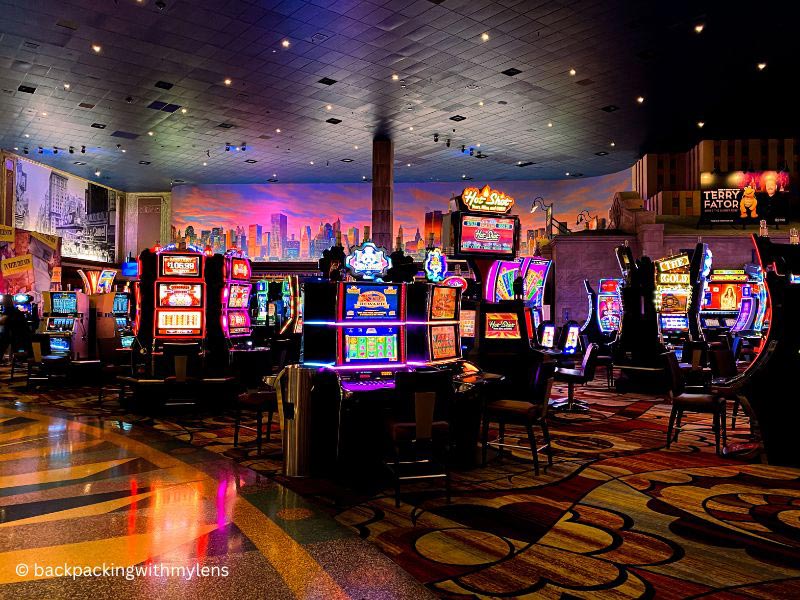
Within the lively and thrilling world of gaming establishments, wherein luck and strategy intertwine, hues and design play a pivotal role in attracting gamblers. As soon as players step into a casino or access a gaming platform, they are enveloped in a sightly feast that grabs their attention and lures them to discover further. Bright colors, engaging graphics, and creative layouts are carefully crafted to create an atmosphere of excitement and expectation, ultimately improving the gaming experience.
While gamblers move through the ever-changing landscape of casino games, they come across a variety of designs that not only serve visual purposes but also influence feelings and choices. Hues like scarlet and yellow symbolize riches and fortune, while calm blues and greens can create a much relaxed environment. Grasping how these elements function together allows casinos to create an welcoming and energizing atmosphere that encourages players to engage with the games, invest more time at the tables, and boost their general enjoyment.
The Science of Tint in Casino Games
Hue plays a key role in the design of casino games, influencing players’ emotional states and behaviors. Vivid and vibrant colors, such as crimson and yellow, are often used to ignite enthusiasm and draw focus. These hues create a sense of urgency and vitality, encouraging players to involve themselves more enthusiastically with the game. By thoughtfully selecting tints, developers aim to inspire emotions of pleasure and expectation, which can enhance the total player experience.
Different colors also have psychological meanings that can affect how gamblers perceive their possibilities of winning. For instance, green is commonly associated with luck and wealth, making it a popular choice in games like roulette and poker games. This connection can lead players to feel more hopeful and self-assured in their gameplay, ultimately motivating them to stake more. Understanding these associations allows game creators to create environments that enhance player satisfaction and retention.
Moreover, the layout of gambling game interfaces often employs gradients and opposing colors to direct player actions. For example, successful outcomes may be highlighted with vivid, opposing shades, creating a visual incentive. This method reinforces successful results and supports repeated participation. By leveraging the psychology of color, casinos can develop games that not only captivate players but also maintain them interested and invested in their game experience.
Design Elements that Attract Gamers
The visual appeal of gambling games is largely influenced by the implementation of vibrant colors. https://rr88.wales/ Lively and contrasting colors are deliberately chosen to create an inviting atmosphere that grabs attention. For instance, reds and golden hues often signify good fortune and prosperity, which is why they are prevalent in the palettes of gaming machines and game surfaces. These colors not only attract players in, but they also evoke emotions associated with excitement and anticipation, enhancing the overall gaming experience.
In addition to color, the aesthetic and layout of gambling games play a crucial role in player attraction. Games are designed to be user-friendly, ensuring that players can easily understand the rules and gameplay. Accessible interfaces, along with captivating graphics and motion, help maintain gamer interest and promote extended play sessions. The physical elements, such as the feel of the buttons and the audio of the games, also add to a holistic sensory experience that keeps players engaged.
In conclusion, thematic elements in game design can significantly influence player choice. Many gambling games are inspired by popular culture, myths, or adventure themes, featuring symbols and characters that resonate with players. These themes create a sense of immersion and relatability, making each game feel distinct. When players feel a bond to the concept, they are more likely to opt for that game over others, leading to increased participation and enthusiasm within the casino environment.
Case Studies: Successful Gambling Game Designs
One key example of successful gambling game design is the well-known slot machine series themed around blockbuster movies. Games such as those based on the Wizard of Oz and Game of Thrones utilize bright colors and high-quality graphics to immerse players in well-known narratives. The use of lively visuals and captivating sound effects captures the interest of players, establishing an affective connection to the theme. This tactic not only encourages longer play but also improves the overall gaming experience, leading to increased player retention.
Another effective case is the application of color in table games like 21 and roulette. Casinos often develop these games with dark reds and greens, colors traditionally associated with luck and wealth. For instance, the green felt on a 21 table provides a relaxing effect, while the crimson accents in roulette invite excitement. This thoughtful use of color helps to foster an inviting atmosphere that encourages players to engage, satisfying their psychological impulses and enhancing their enjoyment.
Finally, social casino games that feature social features and vivid, lively designs have seen remarkable success in engaging players. Games like Zynga’s Poker and Slot-O-Mania leverage bright colors and playful animations to establish an inviting online environment. The addition of leaderboards, community sharing options, and in-app rewards promotes competition and community, attracting players in for longer sessions. Such designs merely make the games visually enticing but also highlight community engagement, a key factor in player retention and engagement within online casino environments.
